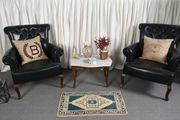Turkish Kilim Pillow, Kilim Cushion Sham, Outdoor Patio Pillow Case, Antique Pillows, Aesthetic Pillow Cover, 16"x16" Beige Pillow Cover
Office Chair Pillow, Kilim Pillow Cover, Home Decor Pillow, Turkish Kilim Pillow, Outdoor Throw Pillow, 16"x16" Blue Cushion Case
16"x16" Beige Cushion Case, Southwestern Pillow Sham, Kilim Pillow Cover, Turkish Pillow, Handmade Rug Seat Pillow Case, Vintage Pillow
Antique Pillows, Handmade Kilim Cushion, 16"x16" Blue Pillow Sham, Vintage Pillow Cover, Kilim Pillow Cover
Turkish Pillow, 16"x16" Green Pillow Cover, Christmas Cushion Case, Crochet Pattern Pillow Cover, Vintage Kilim Throw Pillow, Gift Pillow
Throw Kilim Pillow, Boho Pillow, One Of A Kind Cushion, Outdoor Throw Pillow Case, 16"x16" Beige Pillow Case, Gift Pillow
Decorative Throw Cushion Case, Boho Pillow, Vintage Kilim Throw Pillow, Interior Designer Pillow, 16"x16" Beige Pillow Case
Sofa Bolster Pillow Sham, Boho Pillow, Pillow for Couch, Living Room Throw Cushion, 16"x16" Beige Pillow, Turkish Kilim Pillow
Crochet Pattern Cushion, Bolster Pillow Case, 16"x16" Red Pillow Case, Kilim Pillow Cover, Kilim Pillow, Home Decor Pillow
16"x16" Blue Pillow Sham, Kilim Pillow, Decorative Pillow Case, Patio Pillow Sham, Kilim Cushion Sham, Boho Pillow Sham Cover
Meditation Pillow, Vintage Kilim Pillow, 16"x16" Beige Pillow Case, Handmade Kilim Cushion, Floor Cushion, Home Decor Pillow
Handmade Throw Pillow Sham, Pillow for Sofa, Ethnical Kilim Rug Pillow, Handmade Kilim Cushion, 16"x16" Red Pillow Case
Throw Kilim Pillow, Bohemian Cushion Cushion Case, Turkish Kilim Pillow, Gift Pillow, Colorful Cushion, 16"x16" Blue Pillow Cover
Boho Throw Cushion Case, Vintage Pillow, Handmade Kilim Cushion, 16"x16" Beige Pillow Cover, Vintage Kilim Throw Pillow, Muted Pillow Case
Turkish Bench Pillow, Pillow for Couch, Gift Pillow, Tribal Pillow Cover, 16"x16" Blue Pillow Sham, Vintage Kilim Pillow
Turkish Pillow, Turkish Kilim Pillow, 16"x16" Yellow Cushion Cover, Kilim Pillow, Rustic Cushion Cover, Outdoor Throw Pillow Cover
Kilim Cushion Sham, 16"x16" Blue Pillow Sham, Antique Pillows, Personalized Gift Pillow Pillow Case, Vintage Kilim Throw Pillow
Boho Pillow Sham Cover, Antique Pillows, Turkish Bench Cushion Cover, 16"x16" Beige Cushion, Ethnical Kilim Rug Pillow
Kilim Pillow, Handmade Rug Seat Pillow Cover, 16"x16" Orange Cushion Cover, Gift Pillow, Vintage Kilim Throw Pillow
Neutral Pillow Cover, Kilim Cushion Sham, Interior Designer Pillow, Wholesale Pillow, Boho Pillow Sham Cover, 16"x16" Green Cushion Cover
Rugs have been an integral part of human civilization for centuries, woven into the fabric of cultural heritage and artistic expression. Across the globe, various countries have distinguished themselves in the art of rug-making, each contributing unique styles, techniques, and designs that reflect their rich history and craftsmanship. Join us as we embark on a journey to discover the countries that are famous for their rugs, exploring the beauty and cultural significance woven into each intricate thread.
Rug-making is a craft that has been practiced in numerous countries, each with its own distinct traditions and styles. Let's explore the countries that have become synonymous with the art of rug-making:
1. Persia (Iran)
Persia, now modern-day Iran, is renowned for its Persian rug, which are among the most luxurious and sought-after in the world. Persian rug is characterized by their intricate designs, rich colors, and meticulous craftsmanship. They often feature motifs such as floral patterns, medallions, and geometric designs, reflecting the diverse cultural heritage of Persia.
2. Turkey
Turkey has a long history of rug-making, producing some of the finest examples of Turkish rug, also known as Anatolian rug. Turkish rug is distinguished by their bold colors, intricate designs, and high knot density. They often feature geometric patterns and tribal motifs that vary by region, such as the famous prayer rug from Anatolia.
3. Morocco
Morocco is celebrated for its Berber rug, which are handmade by the Berber tribes of North Africa using traditional techniques. Berber rug is known for their minimalist designs, featuring abstract patterns and tribal symbols. They are typically made from natural wool and are appreciated for their durability and texture.
4. India
India has a rich tradition of rug-making, with regions like Kashmir and Rajasthan producing exquisite handmade rug. Indian rug is known for their intricate patterns, fine craftsmanship, and use of luxurious materials like silk and wool. They often feature floral designs, paisleys, and intricate borders.
5. Pakistan
Pakistan is famous for its hand-knotted rugs, particularly those produced in cities like Lahore and Karachi. Pakistani rug is characterized by their high knot density, vibrant colors, and traditional designs. They often feature geometric patterns and floral motifs, crafted with precision and skill.
6. Afghanistan
Afghanistan is renowned for its Afghan rug, which are handmade by local weavers using traditional techniques. Afghan rug is known for their deep, rich colors and bold designs. They often feature geometric patterns, octagonal shapes, and motifs that reflect Afghan cultural heritage.
7. Nepal and Tibet
Nepal and Tibet are famous for producing high-quality Tibetan rug, which are handcrafted by Tibetan refugees and local artisans. Tibetan rug is characterized by their unique knotting techniques and designs inspired by Tibetan Buddhism. They often feature dragon motifs, lotus flowers, and intricate borders.
8. Caucasus (Armenia, Azerbaijan, Georgia)
The Caucasus region is known for its Caucasian rugs, which are handmade by various ethnic groups using traditional weaving methods. Caucasian rug is distinguished by their bold colors, geometric patterns, and tribal designs. Each rug is a unique expression of cultural identity and craftsmanship.
Embracing Cultural Diversity in Rug-Making
The art of rug-making transcends borders, languages, and cultures, weaving together stories of tradition, creativity, and craftsmanship. Whether you prefer the luxurious elegance of Persian rug, the tribal charm of Moroccan Berber rug, or the geometric precision of Turkish rug, each country offers a unique perspective on the art of rug-making. Embrace the cultural diversity and beauty of rug as you explore the world through these exquisite textiles. Let the stories woven into each rug enrich your home and connect you to the rich tapestry of global craftsmanship. Happy decorating! You can choose the best products with Kayrarug.
